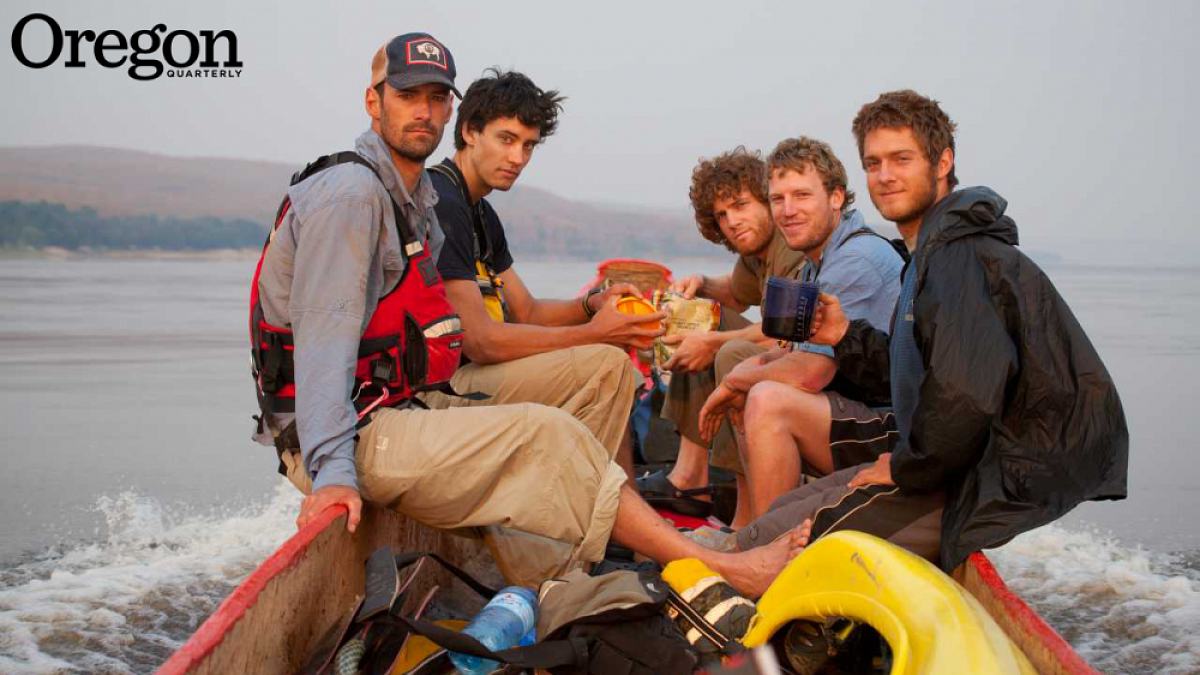Face-down on the sandy bank of the lower Congo River, with men pointing AK-47s at his back and yelling furiously and incomprehensibly in the local Lingala dialect, several thoughts cascaded like Class 5 white water through Trip Jennings’ mind.
The first was a notion he had never once entertained on any of his many adventures around the world, kayaking off 100-foot waterfalls, dodging giant killer whirlpools, being chased by crocodiles and such—the notion that this time he really was about to die.
The second thought was that if he could just get to his video camera, this would make some awesome footage for the film.
The next was what a damn shame it would be that he and five other of the world’s best expedition kayakers (including his friends and fellow adventurers Kyle Dickman ’06 and Andy Maser ’07) had survived a never-before-run section of the wild and deadly lower Congo rapids, the most terrifying stretch of white water Jennings had ever seen, only to be shot in the back fifty miles from the nearest road by these rebel soldiers—or Congolese military soldiers, or rogue ex-military, or maybe just bandits. In the many conflict zones of the Democratic Republic of the Congo, it is often hard to tell who is trying to kill you.
Finally, Jennings thought that if he could just show them the piece of paper in his camera bag, a government letter signed by the DRC’s minister of public information, it might save the prone kayakers. Not that any of these men cared about the minister of public information, but shooting the guests of a high-ranking official might be more trouble than it was worth.
Jennings lifted his head to try to say something in broken French to the man who appeared to be the leader. Unbelievably, the gunmen managed to scream at him even louder. Sonofabitch, Jennings thought, give me a twenty-foot-deep kayak-eating whirlpool any day.
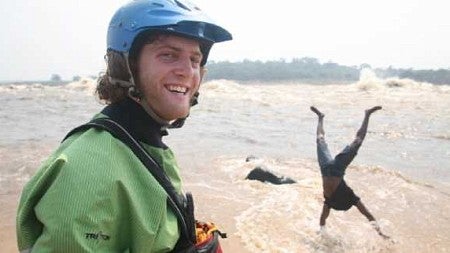
Jennings first climbed into a white-water kayak—the small plastic boats that are worn almost like clothing and allow paddlers to run rivers like a kind of aquatic centaur, half human, half hull—when he was eleven years old. It was love at first roll.
Growing up in Richmond, Virginia, Jennings had never been very good at the various team sports he tried. But then he attended a summer camp founded by a family friend, got into the kayak, and listened to a very brief description of how to roll back upright when he tipped over—which he did almost immediately. Jennings swept his paddle underwater as instructed and popped up like toaster pastry. Anyone who has spent long moments hanging underwater from a kayak, swishing the paddle around with all the effectiveness of stirring a milkshake with dental floss, and contemplating what is euphemistically called a “wet exit,” will recognize the magnitude of first-try success.
Jennings had found his thing.
Now twenty-seven, he remembers the moment powerfully. “The instant I started paddling,” Jennings says, “it felt right, it felt awesome. I had no idea at age eleven what it would mean, but I knew I wanted to kayak a lot.”
One of the founders of the camp—where Jennings would go on to work many summers as a counselor and then as director of the rock climbing and kayaking programs—was a pro-level kayaker who became the paddling prodigy’s mentor. Soon Jennings was taking part in competitions around the East Coast. He did well enough that in high school he was offered a sponsorship by a well-known manufacturer, Perception Kayaks, to join their junior pro team.
It was young guy heaven: the first of three summers spent on a forty-foot RV piled high with kayaks and fueled by testosterone, traveling the country in the company of Jennings’ childhood kayaking heroes, going to competitions and paddling all the best white water in America—including Oregon, where once again he felt the call of the awesome.
Jennings had found his place.
“We’d paddled a lot of beautiful spots,” he says, “but we got to Oregon and it all hit me, the rivers, the waterfalls, the mountains and big trees—this was where I wanted to be. I came out to stay a year later.”
To stay and, at his parents’ insistence, to go to college. He roomed with Maser, whom he’d met back east, and was introduced to Dickman on a rock climbing trip. They formed an adventurous trio.
“Trip is the eternal optimist,” Dickman says. “It doesn’t matter how bad things are, he’s always sure it will work out okay. He’s the first to get you into trouble, and the first to get you out.”
“It’s true,” echoes Maser. “Trip is always willing to get as far out there as you can get. He’ll engage with anyone, no matter how hostile they might seem—or be. Sometimes it actually comes in handy.”
* * *
The guys with the AK-47s hadn’t shot him yet, so Jennings figured it was time to get proactive.

So the tall red-headed guy kept repeating in not-very-good French that he was going to get up and get a piece of paper that would explain everything. He rose slowly into a torrent of Lingala, but no bullets, and carefully pulled the official document from his camera bag. But it was written in formal French, and the leader of the gunmen couldn’t read it. Neither, it appeared, could anyone else. Finally, the most educated bad guy was located, who translated the letter from French into Lingala. The leader frowned at the six kayakers, barefoot and bare-chested in the warm morning, who had carefully risen to their feet. He pointed to their shoes and shirts, indicating that they should put them on. Then he motioned with his gun for them to walk up into the jungle.
“‘Oh, great,’” Jennings remembers thinking, “‘now we’re being taken captive. I do not want to be a hostage at all. The Congo is a bad place to be a hostage.’ Nothing in my life had ever prepared me to deal with anything like this. Then my buddy Kyle looked at me, looked at them all pointing up into the jungle, looked back at me, then looked at them and said, ‘Nope. No way.’ And I’m thinking, ‘That’s brilliant! Just say no!’”
And so the kayakers all turned and began slowly packing up their gear—which took what seemed like an eternity, as their tents were still up and everything they carried with them was all over the river bank—while the irate gunmen waved their weapons and shouted threats. The plan, if you could call it that, was that if the shooting started the paddlers would all run in different directions, hoping at least someone would get away. To where, exactly, was an agenda item for later. Jennings and the others tried to concentrate on packing up—tried not to imagine the first blast ringing in their ears, scattering birds into the African sky.
* * *
Jennings took some extra time to finish school—the lure of kayaking was simply too strong. In 2003, after his final summer traveling with the Perception team, he started a video production company called the Epicocity Project. Or, put another way, he convinced two of his buddies to buy an old Subaru with him and just go traveling, sleeping in the car, paddling “sick” white water, and making videos in the genre Jennings affectionately calls “kayak porn.”
“It was the quintessential road trip,” he says. “I dedicated a year and half to that, working ridiculous jobs to get the money together to shoot the next segment. Like one time I worked construction and they were renovating a house with an eighteen-inch crawl space that needed to be dug to twenty-four inches. So they handed me a tarp, a shovel, and a headlamp and said, ‘See you in three weeks.’ All I could think was that it was going to get me to Chile to film the next segment.”
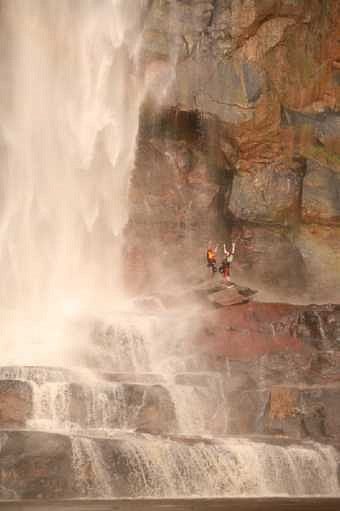
Jennings had found his work.
Eventually, he graduated from the UO with a degree in Spanish literature—something of a major of convenience, but being fluent in Spanish has often been helpful. Along the way, he found a mentor and kindred spirit in UO journalism professor and kayaker Bill Ryan.
What came after graduation has surprised even Jennings, although he’d been dreaming about something like it since he was a kid. He’s become a modern-day explorer, expedition leader, and conservation filmmaker. Which you will not find listed at a college job fair.
“The whole time I’ve been kayaking, I’ve always been passionate about protecting the places we play,” Jennings says, “and the more I traveled the world to paddle, the more I was blessed to experience some of the most pristine wilderness areas in a way very few people can. I began to see that these areas are so threatened—on the way to these places I always wound up traveling through some of the most destroyed and devastated landscapes there are. The intersection between civilization and the wilderness is usually the place where anything goes; it’s like the Wild West out there. You see the clear cuts, the dams, the mines, the markets with the bush meat hanging in the street. I felt like I had a responsibility to tell a bigger, more complex, and more important story than just paddling sick white water. People are going to watch kayaking media, so why not use the opportunity to talk about environmental protection?”
Jennings began looking for funding for an expedition to the never-before-kayaked Pandi River in Papua New Guinea, part of the world’s third-largest remaining tropical rainforest wilderness area. He heard that the National Geographic Society had just initiated a new program called the Young Explorers grant. The fit seemed ideal—the society was looking for projects that combined youth-oriented adventure, conservation, and science—so Jennings made his pitch. In 2007, he became the second recipient of a Young Explorer grant.
Jennings had found his calling.
So he was off to paddle and film on the Pandi. The following year he made the Congo trip—in Trip-like fashion.
“The National Geographic people had just a short section of the lower Congo in mind when they made the grant,” says Dickman, “but when we got to Africa, Trip pulls out the map and says, ‘Why don’t we make a first descent of this whole eighty-five-mile section! It will be great!’ And of course we listened to him.”
Then, in 2009, a National Geographic grant supported Jennings as he paddled the Rio Roosevelt, a tributary of the Amazon, with a group of scientists. Located in the world’s largest tropical rainforest wilderness area, the river got its English name after Teddy Roosevelt paddled down it in 1916.
An expedition to Laos followed, and Jennings has recently received another Young Explorer grant to return to the Congo—only this time they won’t be paddling the lower Congo. This time the expedition isn’t about kayaking rapids, but instead about the rapidly dwindling elephant population, and fighting the international ivory poachers who are killing 10 percent of the remaining elephants every year. This time, in fact, they’re going to the most dangerous part of the country.
* * *

As soon as Jennings figured they were safely out of range downriver, he yelled at the group to pull over to the shore. Before everyone was out of their kayaks, Jennings had his video camera out and began interviewing each member of the expedition.
“When I’d gotten a little brave with the gunmen,” he recalls, “I’d actually pulled out the videocam and pointed to it and to them, like ‘Can I film you?’ They didn’t react very well to that at all, so I didn’t get any footage. But the interviews with all of us right after, that was some great stuff that made it into the film!”
“That’s Trip,” Maser laughs. “Another time, we’re on a 200-mile kayak trip in the middle of nowhere in Tibet when the Chinese cracked down on the country. All the borders are closed with us inside them, and we’re hiding under a bridge in the boats as a Chinese military convoy rolls over it above us—and you just know Trip is thinking, “Man, I’ve gotta film this.’”
“If there was a limit to be pushed,” Dickman adds, “Trip would push it. But recently, as he’s gotten older, he’s learning to back off a bit.”
* * *
Should you decide to kayak off a waterfall—a 100-footer such as Jennings has done, or just a little everyday thirty-three-footer, such as you’ll find on Jennings’ favorite river to run in the world, the Little White Salmon on the Washington side of the Columbia River Gorge—you’ll use a move which was pioneered in Jennings’ adopted home state and is called the Oregon tuck. You’ll paddle over the falls (imagine a ten-story building with water running off the roof and plunging into a swimming pool at the bottom) and you’ll extend your last stroke so you don’t overrotate during the drop. The last paddle stroke, in fact, controls your angle the whole way down, so it better be a good one. Then, at the last second, you’ll do a sort of crunch toward the bow of the kayak, putting your forearm on the deck and your forehead on your arm. You’ll clear the paddle out along the side of the kayak. The goal is for the boat to enter the water perfectly vertical, stabbing it like a knife, with your body tightly tucked in. Do it right and all you’ll have left is to work your way back to the surface and away from the roiling pool. Do it slightly wrong, and you’ll break your paddle or your nose or both. Do it much more than slightly wrong, and you’ll break your life.
“The way you land is everything—you can totally destroy yourself,” Jennings points out, somewhat unnecessarily.
Which is what happened last summer, when a close friend of Jennings missed his line off a waterfall and suffered life-threatening head injuries. Jennings and the rest of the group spent three hours trying to keep their friend from hypothermia, and trying to keep his spine in traction until the helicopter arrived.
“My buddy nearly died that day, and that just changed the game for me,” says Jennings. “I’m at the point in the sport now where I’m not going to push the physical limits of kayaking anymore. But I still plan to push the geographical limits, I guess you could say, doing expedition kayaking, running rivers in places where people didn’t think we could. That’s what I love these days.”
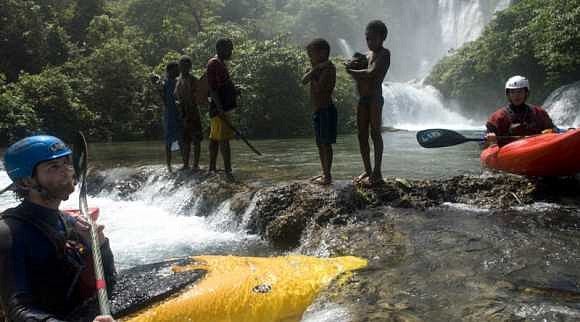
Samuel Wasser, director of the UW’s Center for Conservation Biology, spent thirty years in Africa and has seen the slaughter of elephants firsthand. And while the common perception in the United States may be that impoverished locals are killing these animals for a few dollars, the truth is that large, well-funded international ivory cartels, operating much like drug cartels, are behind the slaughter. They are enabled (and supplied with automatic weapons) by the Congolese military. The bulk of the ivory goes to the world’s two largest markets for it: China and the United States. That’s another common misconception—that only Asia buys ivory. Go to any knife and gun show in America and you will see tables covered with illegal ivory handles and grips. Many of the buyers probably don’t know they are directly contributing to the extinction of one of the world’s most iconic wild animals.
Wasser heard about Jennings during a National Geographic presentation that featured Jennings’ first Congo journey. To Wasser, the unflappable young kayaker seemed a perfect fit for a project in this vast, remote, and “tricky” part of the Congo.
Jennings’ expedition will send the elephant scat to Wasser, who will compare the DNA in the samples to that taken from confiscated ivory. The results will enable Wasser’s team to build a detailed map of where poachers operate, as an intelligence tool for Interpol’s Wildlife Crimes Unit, as well as for antipoaching teams on the ground in the Congo and other law enforcement officials, prosecutors, and diplomats trying to fight the global ivory trade.
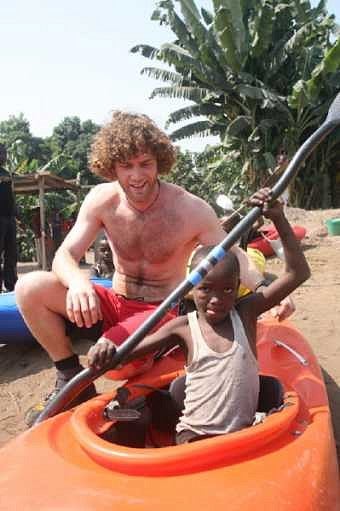
This time, Jennings will have local guides to help the expedition stay away from trouble—something they couldn’t do on the Congo river trip because only the world’s top kayakers could have survived the Class 5 white water.
Beyond the DNA evidence for Wasser’s team, the end product for Jennings will be an exciting film and TV show mixing, as always, adventure, science, and conservation. The film will be useful as an educational tool, both on the ground in the Congo and in the United States, for conservation and environmental nonprofit organizations working to save the remaining elephants.
What began in a small, brightly colored plastic boat at a Virginia summer camp has come full roll. Jennings swept his paddle and popped up into his dreams: Half the year in beautiful Oregon, running his production company (when not running the Little White Salmon) and shooting fundraising videos for nonprofit organizations about which he cares; the other half exploring and kayaking in the wild places around the world—not to plant the flag like his nineteenth-century predecessor on the lower Congo, Henry Stanley, but to plant instead the seeds of a commitment to protecting what little is left of the wilderness.
“Yeah,” Jennings says, “I’m blown away that I can actually pay the bills doing this. I’m amazingly lucky. My goal is to continue producing outdoor environmental films and to tell the best story we can that is also the most productive for the conservation movement. And at least one or two of those expeditions each year should involve kayaks—and at least a little sick white water!”
—By Todd Schwartz
Todd Schwartz ’75 is a Portland writer whose main experiences with white water have come in a hot tub with the jets turned up.
Photography by Skip Brown


